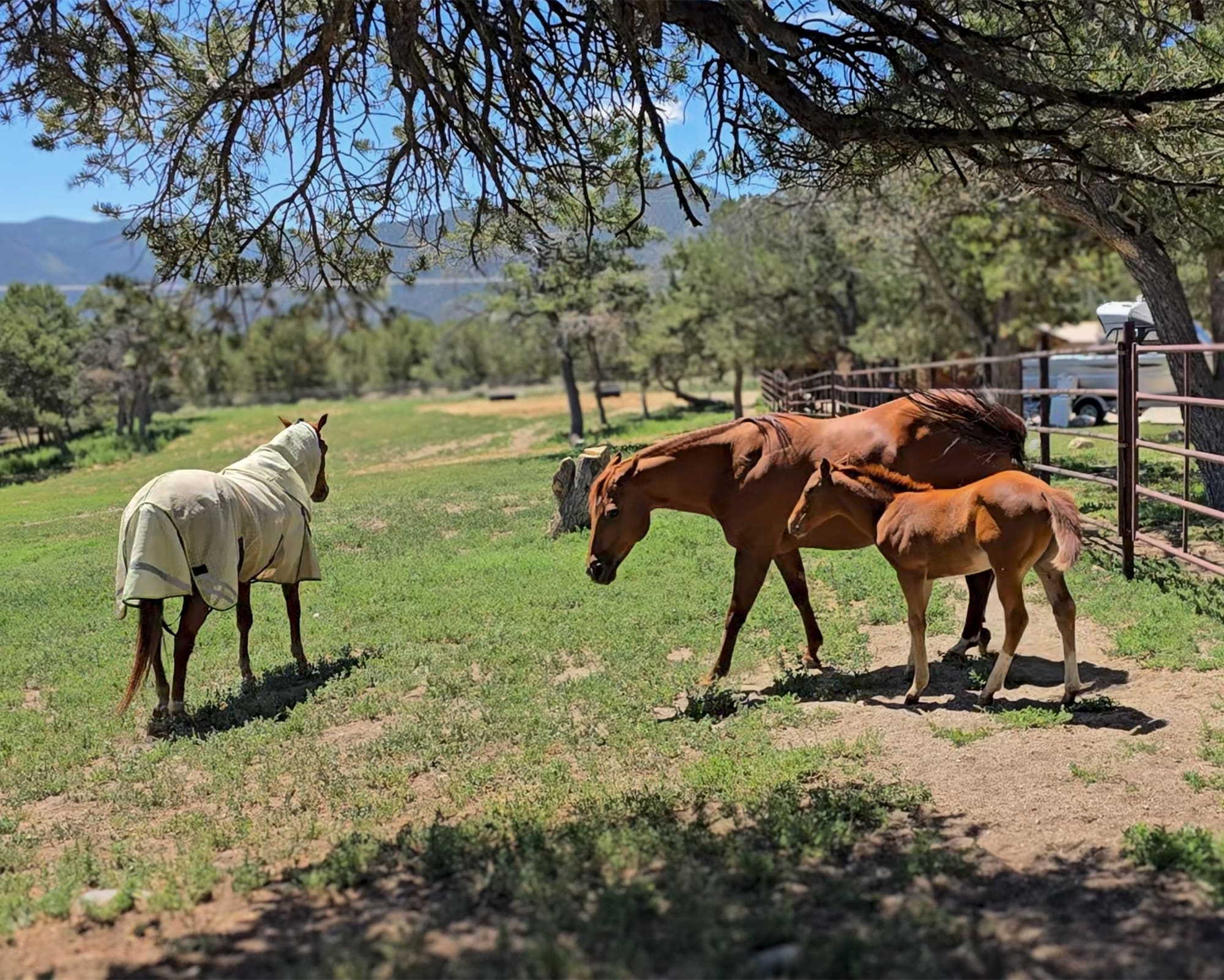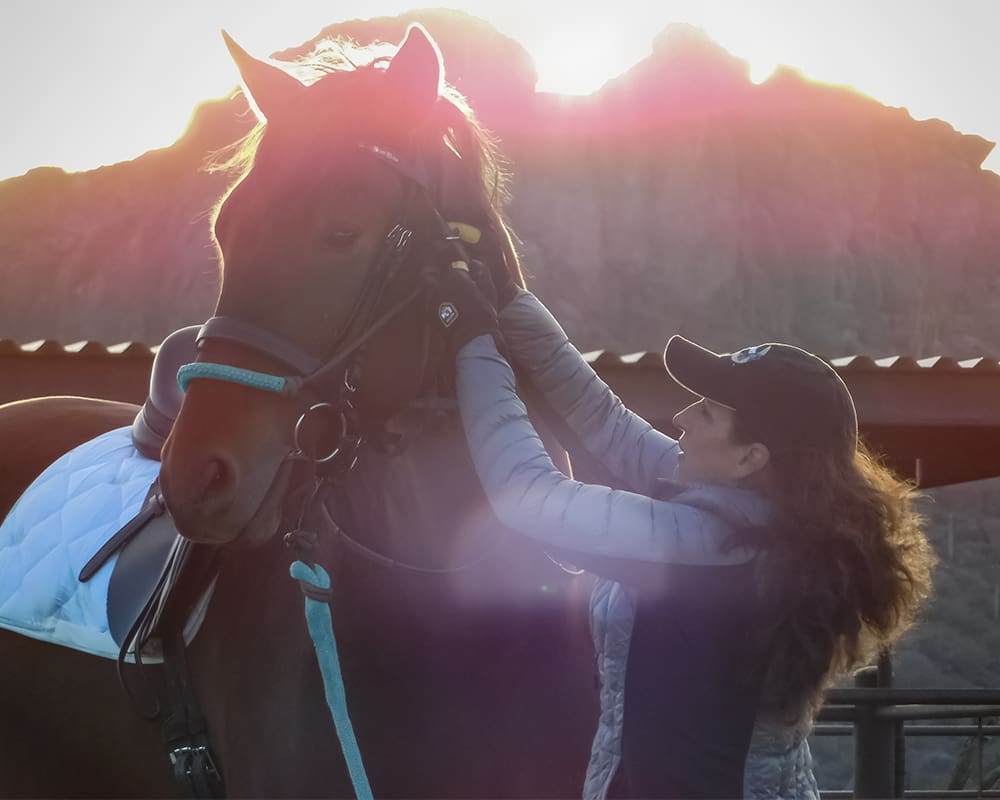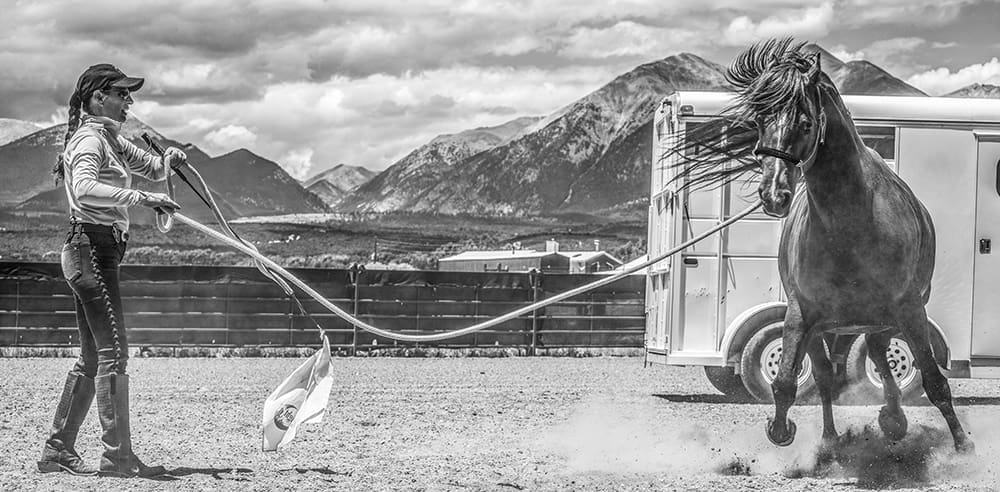Question Category: Horse Behavior
Question: Hi Julie, Can you tell what specifically are the horse’s instincts and how can we use these to our advantage in training?
Yours gratefully, Emma
Answer: Emma, The horse’s instincts are too numerous to mention in one email and would be a good subject for a book! In fact, one of my favorite books on the subject is Horse Behaviour, by Daniel Mills. But there are two primary instincts that everyone should consider when working with horses: the flight response and the herd instinct. As a prey animal, descendant of plains animals, the horse has a strong flight instinct that over-rules all other instincts. When threatened the horse is programmed to run away from danger and he is well equipped for this activity. I have found that most people under-estimate the depth of the flight response. Since the horse has much keener senses than humans, horses often find threat in things we find harmless. Horses rely heavily on their vision and hearing, two senses that are much keener than ours, and all of their other senses to detect danger. Sometimes horses sense danger when we detect nothing. Horses, as prey animals, fear for their lives frequently and constantly. We have a hard time relating to this since we are predators, not prey, and we have a much higher intellectual capacity to analyze situations and know whether or not we are threatened. It is quite easy for a human to lose patience with a horse that is frightened and to attribute their behavior to obstinacy. Patience, confidence and leadership go a long way to help a frightened or spooky horse. Allowing the horse to move his feet when he is nervous is important for keeping him calm. Gaining control of a horse’s feet and flight can be a challenging endeavor for some horse handlers.
The herd instinct drives horses to the protection of the herd. There is safety in numbers. Horses do not survive in the wild on their own and all horses have a strong instinct to be with other horses. Within the herd, there is a hierarchy of leadership known as a linear hierarchy, meaning each and every other individual of the herd is either dominant over or subordinate to, each and every other individual. Unlike in human society, there is no equality in a horse herd. The leader of the herd is the most dominant individual (the alpha individual) and is responsible for protecting the herd from threats, disciplining unruly herd mates and leading the herd to food and water. If we expect horses to trust us and follow us anywhere, we have to act like the leader of the herd and maintain dominance, discipline and take care of the herd. There are numerous articles on my website on how horses establish dominance in the herd and how that relates to how we humans interact with horses. Flight and herd instinct are the two main instinctive behaviors of horses that dictate how we interact with them. The more you can learn about horse behavior, the better equipped you will be to handle horses effectively in a way they can understand and relate to.
Julie Goodnight, Clinician and Trainer
Copyright ©Julie Goodnight 2000. All Rights Reserved. No part of this website may be reproduced without owner’s express consent.
Get Julie Goodnight’s Training Videos: HERE



